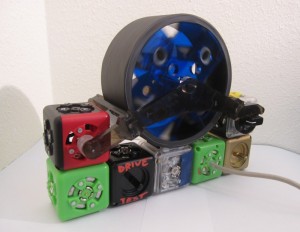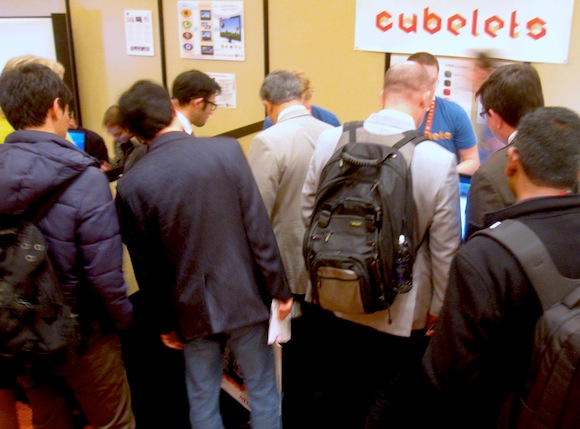I’m happy to announce that we just scored a
big fat venture capital investment from our friends at the Foundry Group. We’re pretty excited — this deal will give us the cash to do so much more than we’re able to do now.
For the last two years, we’ve been building Modular Robotics from an academic project into a toy company. A project like this, of course, requires cash. Normally, companies like us get a VC investment, selling part of the company in exchange for cash. But if you’ve talked with me about this in the past, you’ll know that I’ve been an adamant bootstrapper. I’ve seen all sorts of companies get pressured by investors to release
crappy products, and I didn’t want that to happen to us. We had the freedom to
bootstrap because our patient customers were willing to pre-order kits that they didn’t receive for months, and because the National Science Foundation supported us with us with three
SBIR grants. Grant funding and pre-sales allowed us to grow to 18 people, to build and ship almost 20,000 Cubelets, and to carry on adamantly pulling ourselves up by our bootstraps. We didn’t need any business guys in pleated pants telling us what to do! But a couple of months ago, I changed my my mind.
Why?
Spreadsheets. With all of these employees and all of these tiny robots, my job has changed quite a bit. I spend a lot more time in front of a spreadsheet now than I spend in front of the laser cutter. And when I started to make projections, to see where we might be in one, two, five years, there was no question that a cash infusion now would let us scale up to make a tremendously bigger impact in the future than we could by bootstrapping. Bootstrapping can work, and it’s worked swimmingly for us so far. I mean, here we are, 18 people in a cool lab with a ping-pong table and a production line sending thousands and thousands of tiny robots all around the world! But we can do more. Scaling up now, building out our factory in Colorado, and hiring a few great people will let us get Cubelets out to a far greater number of kids than if we stuck to our previous path.
Another reason for taking on this investment has to do with speed. Since we’re just a bunch of kids in a robot lab, we’re building our business based on agility. We think we can get cool new hardware built, tested, and onto store shelves before the big toy companies have any idea what’s going on. But lately, we’ve been doing a lot of waiting. Waiting for parts because we can only afford to order small quantities at a time. And waiting for tooling changes because we’re not first priority to some of our vendors. We realized that there was a better way.
We went straight to the best VC firm in the country. Seriously:
they wrote the book. The Foundry Group has had amazing success with tech companies and they also happen to invest in all of our friends like
Orbotix,
Sifteo, and
MakerBot. We called managing director
Brad Feld and he immediately understood what we were trying to accomplish. And so
here we are!
I’m not sure that anyone reading this really cares about our financial strategy; I’m pretty sure that our audience consists mostly of kids, educators, technologists, alpha-geeks, engineers, and artists. Not people who read techcrunch. I thought I’d write about this here, though, because it means that we’ll be able to make Cubelets (and you should see the other robots coming down the pipeline!) significantly faster and better than we even dreamed about yesterday.
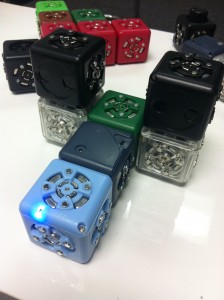

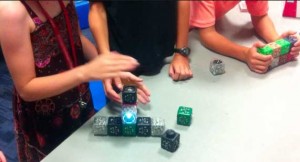
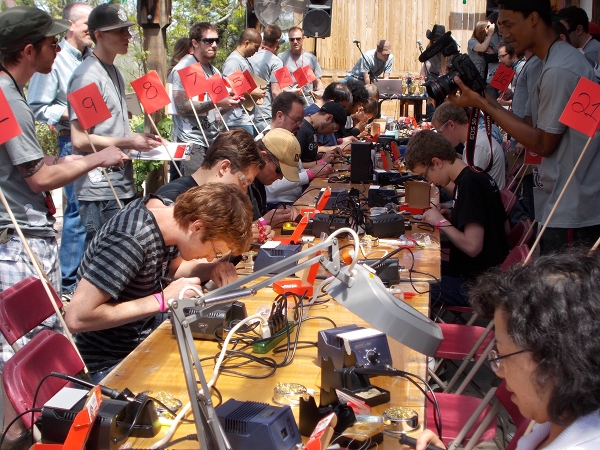


 I’m happy to report that we’re busy assembling Cubelets and are finally shipping again. These are the new KT06 boxes! We’ve got a lot of pre-orders to work through — if you have a pending pre-order, expect an email in the next day or two with a new estimated shipping date.
I’m happy to report that we’re busy assembling Cubelets and are finally shipping again. These are the new KT06 boxes! We’ve got a lot of pre-orders to work through — if you have a pending pre-order, expect an email in the next day or two with a new estimated shipping date. 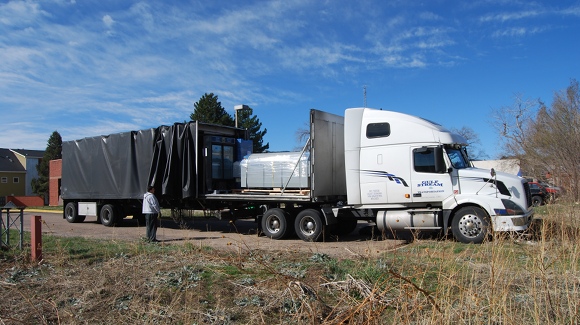 We rented a forklift for the day to lift our new twelve foot long reflow oven off the truck and bring it into our shop. Matt drove.
We rented a forklift for the day to lift our new twelve foot long reflow oven off the truck and bring it into our shop. Matt drove.
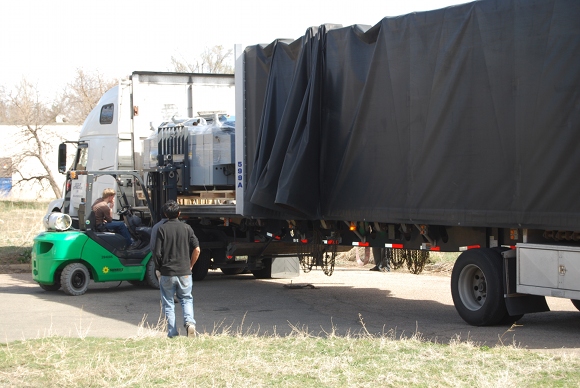 This beauty is an Electrovert Omniflo 5. We bought it used from a broker in Washington. It’s got 5 heating zones and is programmed with specific temperature curves to solder our Cubelets boards perfectly. Since the old skillet method worked so well, we weren’t really sure that we were going to need a real reflow oven, but it turned out that the boards that got burned or a little undercooked had a nefarious way of making their way further down the assembly process and requiring a lot of time to fix later. So we’re reflowing. 480 PCBs so far and they’re all beautiful! I never thought I’d be so excited about a piece of industrial equipment.
This beauty is an Electrovert Omniflo 5. We bought it used from a broker in Washington. It’s got 5 heating zones and is programmed with specific temperature curves to solder our Cubelets boards perfectly. Since the old skillet method worked so well, we weren’t really sure that we were going to need a real reflow oven, but it turned out that the boards that got burned or a little undercooked had a nefarious way of making their way further down the assembly process and requiring a lot of time to fix later. So we’re reflowing. 480 PCBs so far and they’re all beautiful! I never thought I’d be so excited about a piece of industrial equipment.

